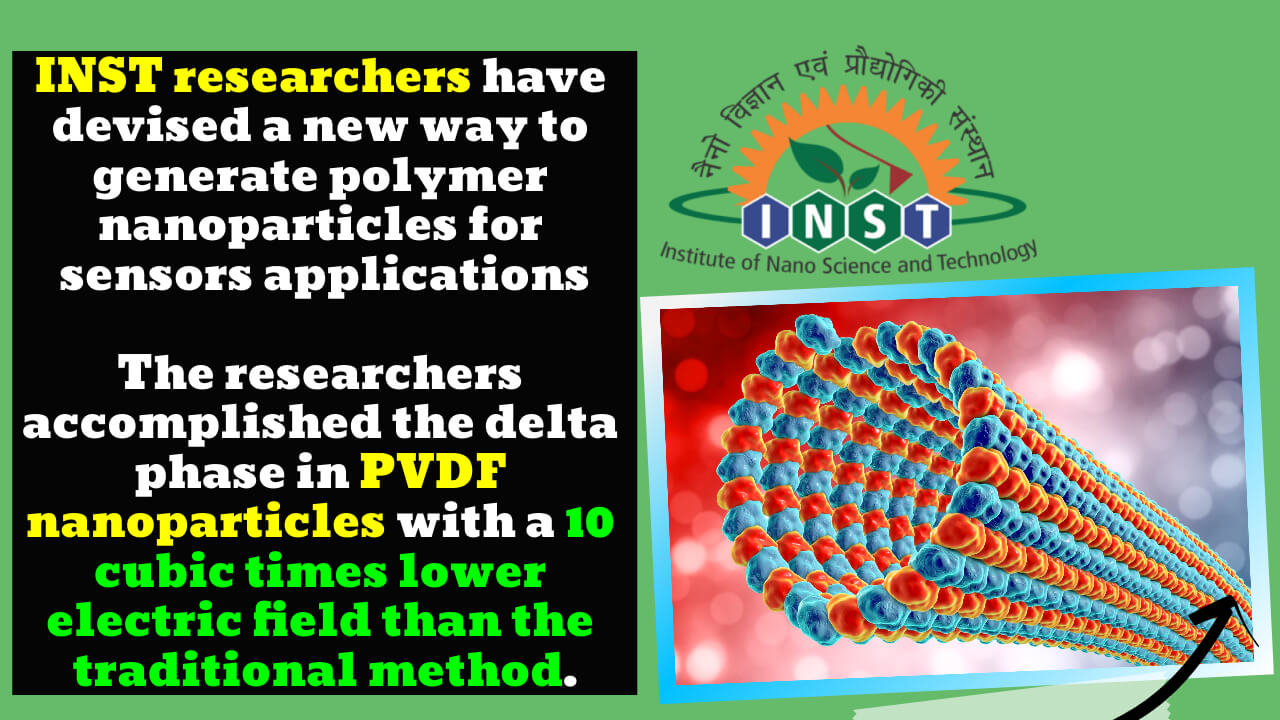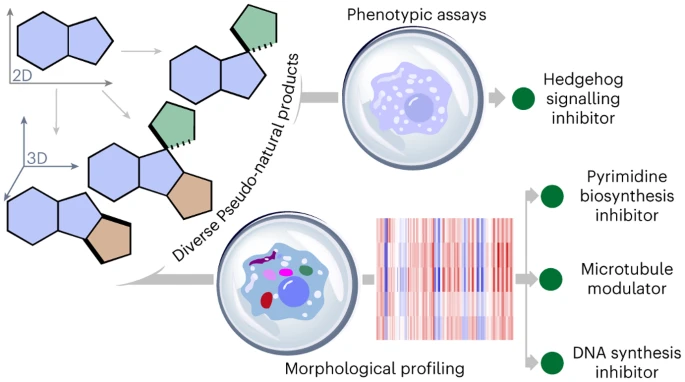Indian scientists have come up with an easy way to make polymer nanoparticles have a property called the piezoelectric delta phase. Researchers found that nanogenerators could be used in touch, acoustic, and other things. A team from the Institute of Nano Science and Technology, Mohali did this work.
Key Highlight:
- For the first time, Indian researchers have proposed an efficient approach to produce piezoelectric delta phase in polymer nanoparticles, which can be used in touch sensors, acoustic sensors, and piezoelectric nanogenerators.
- The piezoelectric effect occurs when some materials develop an electric charge when mechanically stressed.
- A high electric field induces the piezoelectric delta phase in polyvinylidene fluoride (PVDF) films, which limits commercialization.
- The researchers accomplished the delta phase in PVDF nanoparticles with a 10 cubic times lower electric field than the traditional method.
- The INST team created a piezoelectric nanogenerator to illustrate the use of piezoelectric capabilities of these nanoparticles as pressure mapping sensors, sound sensors, and energy harvesting experiments.
For the first time, INST scientists have come up with a way to make polymer nanoparticles have a property called the piezoelectric delta phase. This makes them useful for things like touch sensors, acoustic sensors, and piezoelectric nanogenerators, where they can be used.
In some materials, when they are put under a lot of pressure, they can make an electric charge that can be used to make things work. Piezoelectric effects like this one, which is important for polymers and is called delta polymers, haven’t been studied as much as they should be because it’s hard to make them. This is because it’s difficult to make them. Methods used to make PVDF film have a piezoelectric delta phase have used very high electric fields, which makes it difficult for it to be sold.
A team from the Institute of Nano Science and Technology, Mohali, led by Dr Dipankar Mandal, made a device with PVDF nanoparticles with a much better piezoelectric response than the film version of the same device. People from the team have shown that using a simple method can make the effect happen for the first time in a lab.
“Our goal was to make nanofibres by using a typical electrospinning process to do so. So one day, we noticed that instead of fibers, we saw a powder-like buildup on the collector, not fibers. We looked at the materials that had been put down, and we were surprised to find nanoparticles and piezoelectric-phase. So, in the systematic study, we found out that the delta phase in PVDF could be caused by our method at a lower electric field. “Dr. Mandal said that, too.
Researchers have made PVDF nanoparticles in the lowest electric field they’ve been able to make them in so far. That’s 10 cubic times less electric field than the way they used to make them before. These kinds of commercial technologies make it easier to find things like this. According to a Ministry of Science and Technology press release, this work has been published in the journal Applied Physical Letters.
The INST team made piezoelectric nanogenerators as a proof of concept to show how piezoelectric nanoparticles can be used. These nanogenerators were used as pressure sensors, acoustic sensors, and energy harvesters to see how they worked in real life.





[…] INST researchers have devised a new method for producing polymer nanoparticle… […]